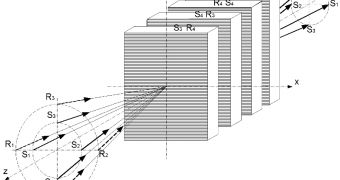Quantum computers are seen by many as the next big step towards faster systems of all sorts, but they aren't exactly easy or affordable to build, not yet.
Now, though, a group of Air Force and Florida Atlantic University researchers have finally come up with a way to create them with off-the-shelf components.
Previously, to actually make a quantum computer, scientists needed to create special parts that, in turn, required special manufacturing equipment.
This ensured that the ultimate cost of making even just a prototype would be astronomical.
Now that existing components are feasible, this obstacle, at least, can be surpassed.
What the breakthrough relies on, though, is a fairly fundamental change in how quantum computers go about things.
Since photons should be used for computing instead of electrons, an interferometer would normally need to be employed to manipulate them, since the particles, on their own, don't interact with each other very easily.
The interferometer is what would add extra cost to make, bringing the problem back to square one.
The solution proposed by scientists is to take some “OpticGrate” glass and permanently encode a hologram on it.
With this to remove the need to calibrate interferometers (since they wouldn't exist), the costs would go down a lot.
On the flip side, it would also be impossible to do calibrating altogether, meaning that programming would have to be hard-coded, limiting quantum computing uses to quantum error correction and the like (and scaling the system would be very hard as well).
In layman terms, quantum systems could be easier to make but would be less versatile than people would like them to be.
Then again, the idea is still in its beginning, theoretical stages, so better implementations may appear further down the line, assuming the project does consolidate into a prototype in a timely fashion.

 14 DAY TRIAL //
14 DAY TRIAL //